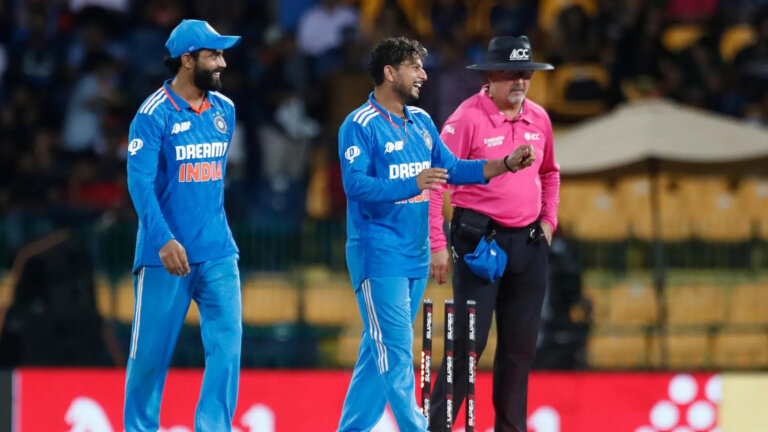
Rohit Sharma, India’s captain, has emphasized the importance of his team’s members being adaptable and creative in the batter’s box, noting that he has stressed this point to his teammates. The team’s batters have been instructed on their responsibilities, according to Rohit, but they must be adaptable enough to make modifications during games if necessary.
“One thing I want in this team is for everyone to be able to bat anywhere,” Rohit said at a press conference announcing India’s Asia Cup roster on Monday (August 21). “That is something we must remember. You need flexible players who can fill in at any position. Nobody should say, “I’m good at this position or that position.” The message to every individual is that you want players to be able to bat everywhere. Not now, but in the previous three to four years.”
The No.4 spot, for example, has traditionally been a focus point for the ODI squad, but the Indian captain highlighted that other players may fill that role depending on the conditions of each match. He used the example of using floater Axar Patel, which India used against Pakistan in the T20 World Cup last year, to counter the opposition’s tactic of restraining India with spinners. The batters below him may go down a spot, providing the team with additional hitting depth while also giving him an advantage in future matchups.
“What it comes down to is the batting options at Nos. 8 and 9.” You know Axar has had a good year, batting brilliantly in white-ball cricket. He got a couple of chances in the West Indies but didn’t make it big, but his presence provides us the option of having a left-hander who can move up the order and play spinners if needed, as well as creating batting depth.
“I know it’s difficult for guys on the outside to understand why a guy who bats six is batting four, but the message has been delivered.” You’re talking about international cricket, not club cricket. We don’t go to bed assigning a position to a specific player and then change it the next morning.
“‘This is what we want,’ we say. You don’t want to be handicapped by having only one person bat in one position. Having said that, you want to get the most out of specific players. That’s the message we’ve been sending for years: all 78 numbers are open to everybody.”
However, Rohit was quick to point out that what he meant by “flexibility” was maintaining within the confines of the general purpose that each player was tasked with, rather than simply being “dynamic” for the sake of being “dynamic.”
“When I said flexibility is important, it’s not like I’m implying sending the opener at No. 7 or opening the batting with Hardik Pandya,” Rohit explained. “In the last seven and a half years, Shikhar [Dhawan] and Rohit have only opened, and Kohli has only batted at three.” Youngsters weighing four to five pounds must be adaptable, batting up and down.
“If you look at the last four or five years, the opener has opened, No. 3 has batted at three, KL [Rahul] has batted at five, Hardik at six, and [Ravindra] Jadeja at seven.” There’s no difficulty with four and five if they move up and down. That level of adaptability is critical. When we first arrived, we batted up and down, demonstrating our versatility. We don’t bat openers at eight and eight opens or anything like that. In a team, a little up and down flexibility is required.”




